Using the Tire Mobility Kit
-
Detach the speed restriction label (1) from the sealant bottle (2), and place it in a highly visible place inside the vehicle such as on the steering wheel to remind the driver not to drive too fast.
-
Filling the sealant Strictly follow the specified sequence, otherwise the sealant may escape under high pressure.
-
Shake the sealant bottle.
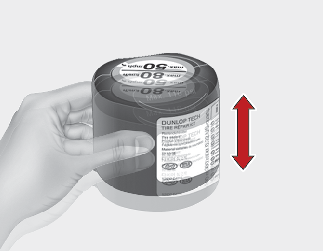
-
Connect the filling hose (3) onto the connector of the sealant bottle (2).
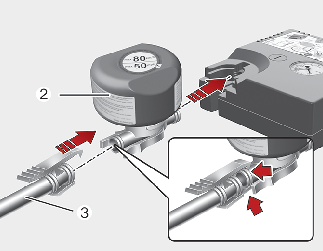
-
Ensure that button (9) on the compressor is not pressed.
-
Unscrew the valve cap from the valve of the defective wheel and screw filling hose (3) of the sealant bottle onto the valve.
-
Insert the sealant bottle into the housing of the compressor so that the bottle is upright.
-
Ensure that the compressor is switched off, position 0.
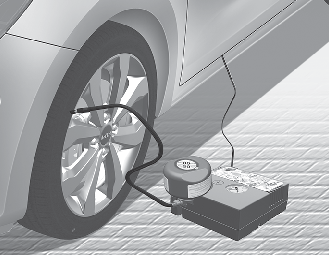
 CAUTION
CAUTION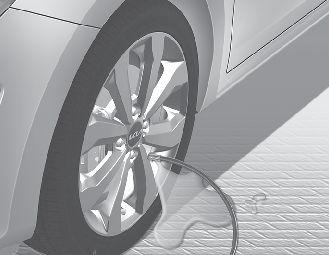
Securely install the sealant filling hose to the valve. If not, sealant may flow backward, possibly clogging the filling hose.
-
Connect between compressor and the vehicle power outlet using the cable and connectors.
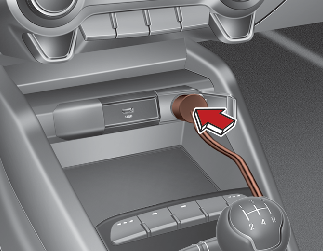
 CAUTION
CAUTIONDo not connect another vehicle's Tire Mobility Kit (TMK) to the power outlet. The unmatched power requirement between the vehicle power outlet and the tire mobility kit can cause fire or circuit damage within the vehicle and the Tire Mobility Kit.
 NOTICE
NOTICEOnly use the front passenger side power outlet.
-
With the ignition switched on or ENGINE START/STOP button position on: Switch on the compressor and let it run for approximately 3 minutes to fill the sealant. The inflation pressure of the tire after filling is unimportant.
-
Switch off the compressor.
-
Detach the hose from the sealant bottle connector and from the tire valve.
Return the Tire Mobility Kit to its storage location in the vehicle.

Carbon monoxide poisoning and suffocation is possible if the engine is left running in a poorly ventilated or unventilated location (such as inside a building).